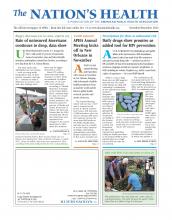Children with autism spectrum disorders tend to be less physically active than those without such disorders, according to a recent study.
But results of several fitness tests show that children with autism spectrum disorders were evenly matched with children without autism except in one area: strength.
The research was published Sept. 16 in Autism Research and Treatment.
“Based on this study, it appears that the underlying abilities are there,” said Megan MacDonald, PhD, a study author and an assistant professor at Oregon State University’s College of Public Health and Human Sciences. “The underlying physical fitness is there. So why are we seeing such a discrepancy when we look at general physical activity over the course of a week? I think that’s an opportunity for us to potentially intervene.”
The study looked at 17 children with autism spectrum disorders and 12 without autism disorders between ages 9 and 18. All participants spent one day doing a series of physical fitness tests, which included a handgrip strength test and a run between cones, the study said. Researchers also monitored the children’s movements for a week using an accelerometer: a device worn on the hip that measured their movements and level of physical activity throughout each day.
Compared with children without autism, children with autism spectrum disorders spent less time doing moderate to vigorous physical activity, such as a brisk walk, or even light activity that does not raise the heart rate, such as a walk through the house, she said. However, the fitness tests showed that aerobic fitness, flexibility and body mass index of children with autism spectrum disorders was similar to the children without autism. The strength test was the only one that children with autism spectrum disorders did not perform as well in, the study said. Researchers are not sure why the children with autism spectrum disorders did not perform as well on the strength test, MacDonald said.
However, MacDonald said adaptive physical education is federally mandated and there are adapted physical educators who have the knowledge to teach those skills to students on the autism spectrum.
“Strength is certainly one area that we have the ability to improve over time when the right interventions are in place,” MacDonald told The Nation’s Health.
MacDonald added that there should also be a family focus on increasing physical activity at home, such as taking a walk outside after dinner. Leading a sedentary lifestyle at an early age could put them at higher risk for chronic health problems as adults, she said.
“The common goal is to get up and get moving,” MacDonald said. “I don’t think it has to be rigorous. What we don’t know with this particular group is what these sedentary behaviors as children mean later in life. We know from other studies they’re more at risk for chronic health conditions later in life like diabetes and metabolic syndrome.”
For more information, visit www.hindawi.com/journals/aurt/2014/312163/.
- Copyright The Nation’s Health, American Public Health Association









